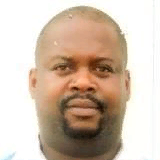International Journal of Engineering and Manufacturing (IJEM)
IJEM Vol. 11, No. 3, 8 Jun. 2021
Cover page and Table of Contents: PDF (size: 1037KB)
Comparison of Linear Quadratic – Regulator and Gaussian – Controllers’ Performance, LQR and LQG: Ball-on-Sphere System as a Case Study
Full Text (PDF, 1037KB), PP.45-67
Views: 0 Downloads: 0
Author(s)
Index Terms
Comparison, LQG, Ball-on-sphere, LQR, System
Abstract
With the state-space method, many controllers can be designed optimally. LQR and LQG are two of these controllers. These two controllers are covered much in the literature. Despite this, not many works cover the ball-on-sphere system. Therefore, the research designed optimal LQR and LQG controllers for the system of ball-on-sphere and did a comparative analysis between the two. System dynamics were first investigated and the mathematical model was derived. After that, the system was linearized and then the state-space representation was obtained. Using this representation, the two controllers were designed and applied to the system for control. The control was done based on the specified desired system performance. Finally, the controllers' performances were analyzed and compared. Results obtained showed that both controllers met the desired system performance. With θ_x is 87.14% and θ_y is 86.43% less than their respective unregulated settling times, LQR satisfied the at least 80% performance requirement more than LQG. For LQG, θ_x is 82.35% and θ_y is 82.95% less than their respective unregulated settling times. These values are less than that of LQR. It was also observed that minimizing the total control energy leads to maximizing the total transient energy but LQG maximizes the total transient energy more than LQR. Another finding was that all states played role in regulating the controller to the desired system performance. Without regulation, LQG was found to be more efficient than LQR but in general, LQR is more efficient than LQG because, in LQG, settling time (of ball's angles) of less than 1.00 sec could not be realized. LQR is 4.79% and 3.48% more efficient than LQG in x and y directions, respectively, for the ball’s angles settling time. This research is significant because it is the first to design and do a comparative analysis of LQR and LQG controllers for the ball-on-sphere system. Therefore, bridging the existing gap in the literature is the value of this research.
Cite This Paper
Usman Mohammed, Tologon Karataev, Omotayo O. Oshiga, Suleiman U. Hussein, Sadiq Thomas, " Comparison of Linear Quadratic – Regulator and Gaussian – Controllers’ Performance, LQR and LQG: Ball-on-Sphere System as a Case Study ", International Journal of Engineering and Manufacturing (IJEM), Vol.11, No.3, pp. 45-67, 2021. DOI: 10.5815/ijem.2021.03.05
Reference
[1]N. S. Nise, CONTROL SYSTEMS ENGINEERING, 6th Edition. California State Polytechnic University, Pomona: John Wiley & Sons, Inc., 2011.
[2]B. Xu, ‘A Comparative Study of PID and LQR Control Strategies Applied to Inverted Pendulum Systems’, Master of Engineering, M.Eng, University of Guelph, Ontario, Canada, 2019.
[3]E. Zakeri, S. A. Moezi, and Y. Bazargan-Lari, ‘Control of a Ball on Sphere System with Adaptive Feedback Linearization method for regulation purpose’, Majlesi J. Mechatron. Eng., vol. 2, no. 3, pp. 23–27, Sep. 2013.
[4]Y.-H. Chang, W.-S. Chan, and C.-W. Chang, ‘T-S Fuzzy Model-Based Adaptive Dynamic Surface Control for Ball and Beam System’, IEEE Trans. Ind. Electron., vol. 60, no. 6, pp. 2251–2263, Jun. 2013, doi: 10.1109/TIE.2012.2192891.
[5]M.-T. Ho, Y.-W. Tu, and H.-S. Lin, ‘Controlling a ball and wheel system using full-state-feedback linearization [Focus on Education]’, IEEE Control Syst., vol. 29, no. 5, pp. 93–101, Oct. 2009, doi: 10.1109/MCS.2009.934085.
[6]A. Buschhaus and S. Schmal, ‘Robolab Reutlingen University’, https://vvl.reutlingen-university.de/homepage/en/index.html. https://vvl.reutlingen-university.de/homepage/en/index.html#demos/ballOnBall/main (accessed Aug. 26, 2020).
[7]A. D. Usman, A. M. Yusuf, A. Umar, and A. Daniel, ‘Structual analysis of ball-on-sphere system using bond graph technique’, in 2017 IEEE 3rd International Conference on Electro-Technology for National Development (NIGERCON), Owerri, Nov. 2017, pp. 519–524, doi: 10.1109/NIGERCON.2017.8281921.
[8]M.-T. Ho, Y. Rizal, and W.-S. Cheng, ‘Stabilization of a Vision-Based Ball-On-Sphere System’, in 2013 IEEE International Conference on Control Applications (CCA), Part of 2013 IEEE Multi-Conference on Systems and Control, Hyderabad, India, Aug. 2013, pp. 929–934, doi: 10.1109/CCA.2013.6662870.
[9]A. Umar, Z. Haruna, U. Musa, S. A. Mohammed, and M. O. Muyideen, ‘Graphical User Interface (GUI) for Position and Trajectory Tracking Control of the Ball and Plate System Using H-Infinity Controller’, doi: 10.20370/YHAS-N460.
[10]M. Rahman, S. K. Sarkar, S. K. Das, and Y. Miao, ‘A comparative study of LQR, LQG, and integral LQG controller for frequency control of interconnected smart grid’, in 2017 3rd International Conference on Electrical Information and Communication Technology (EICT), Khulna, Dec. 2017, pp. 1–6, doi: 10.1109/EICT.2017.8275216.
[11]A. H. O. Ahmed, M. O. Ajangnay, and M. W. Dunnigan, ‘New Approach for Position Control of Induction Motor’, in 45th International Universities Power Engineering Conference UPEC2010, Cardiff, Wales, UK, Sep. 2010, pp. 1–5.
[12]D. S. Naidu, Optimal control systems. Boca Raton, Fla: CRC Press, 2003.
[13]V. Kumar and J. Jerome, ‘Robust LQR Controller Design for Stabilizing and Trajectory Tracking of Inverted Pendulum’, Procedia Eng., vol. 64, pp. 169–178, 2013, doi: 10.1016/j.proeng.2013.09.088.
[14]H. Jafari, A. Rahimpour, and M. Pourrahim, ‘Linear Quadratic Gaussian Control for ball and plate system’, in 2012 international conference on computer, control, education and management, Dubai, United Arab Emirates, Jul. 2012, pp. 1–7.
[15]W. Favoreell and B. D. Moor, ‘Model-free subspace-based LQG-design’, in Proceedings of the American Control Conference (ACC), San Diego, California, Jun. 1999, pp. 3372–3376, doi: 10.1109/ACC.1999.782390.
[16]R. Szabolcsi, ‘DESIGN AND DEVELOPMENT OF THE LQR OPTIMAL CONTROLLER FOR THE UNMANNED AERIAL VEHICLE’, Rev. Air Force Acad., vol. 16, no. 1, pp. 45–54, Aug. 2018, doi: 10.19062/1842-9238.2018.16.1.7.
[17]A. Toloei, E. Aghamirbaha, and M. Zarchi, ‘Mathematical Model and Vibration Analysis of Aircraft with Active Landing Gear System using Linear Quadratic Regulator Technique’, Int. J. Eng., vol. 29, no. 2, Feb. 2016, doi: 10.5829/idosi.ije.2016.29.02b.01.
[18]S.-Y. Liu, Y. Rizal, and M.-T. Ho, ‘Stabilization of a Ball and Sphere System Using Feedback Linearization and Sliding Mode Control’, in 2011 8th Asian Control Conference (ASCC), Kaohsiung, Taiwan, May 2011, pp. 1334–1339.
[19]U. Mohammed, U. H. Suleiman, M. Usman, and T. Sadiq, ‘Design of an Optimal Linear Quadratic Regulator (LQR) Controller for the Ball-On-Sphere System’, Int. J. Eng. Manuf., vol. 10, no. 3, pp. 56–70, Jun. 2020, doi: 10.5815/ijem.2020.03.05.
[20]K. Anurag and S. Kamlu, ‘Design of LQR-PID controller for linearized magnetic levitation system’, in 2018 2nd International Conference on Inventive Systems and Control (ICISC), Coimbatore, Jan. 2018, pp. 444–447, doi: 10.1109/ICISC.2018.8399112.
[21]A. Ashraf, W. Mei, L. Gaoyuan, Z. Anjum, and M. M. Kamal, ‘Design Linear Feedback and LQR Controller for Lateral Flight Dynamics of F-16 Aircraft’, in 2018 International Conference on Control, Automation and Information Sciences (ICCAIS), Hangzhou, Oct. 2018, pp. 367–371, doi: 10.1109/ICCAIS.2018.8570323.
[22]R. Banerjee and A. Pal, ‘Stabilization of Inverted Pendulum on Cart Based on LQG Optimal Control’, in 2018 International Conference on Circuits and Systems in Digital Enterprise Technology (ICCSDET), Kottayam, India, Dec. 2018, pp. 1–4, doi: 10.1109/ICCSDET.2018.8821243.
[23]R. Banerjee, N. Dey, U. Mondal, and B. Hazra, ‘Stabilization of Double Link Inverted Pendulum Using LQR’, in 2018 International Conference on Current Trends towards Converging Technologies (ICCTCT), Coimbatore, Mar. 2018, pp. 1–6, doi: 10.1109/ICCTCT.2018.8550915.
[24]A. Besancon-Voda, G. Filardi, D. Rey, and A. Franco, ‘LQG optimal control strategies for an electro pneumatic actuator’, in 2001 European Control Conference (ECC), Porto, Sep. 2001, pp. 2670–2675, doi: 10.23919/ECC.2001.7076333.
[25]Q. Jin, S. Ren, and Ling Quan, ‘LQG optimum controller design and simulation base on inter model control theory’, in 2009 IEEE International Conference on Intelligent Computing and Intelligent Systems, Shanghai, China, Nov. 2009, pp. 62–65, doi: 10.1109/ICICISYS.2009.5358234.
[26]B. Kurucso, A. Peschka, P. Stumpf, I. Nagy, and I. Vajk, ‘State space control of quadratic boost converter using LQR and LQG approaches’, in 2015 Intl Aegean Conference on Electrical Machines & Power Electronics (ACEMP), 2015 Intl Conference on Optimization of Electrical & Electronic Equipment (OPTIM) & 2015 Intl Symposium on Advanced Electromechanical Motion Systems (ELECTROMOTION), Side, Sep. 2015, pp. 642–648, doi: 10.1109/OPTIM.2015.7427003.
[27]R. Soni and Sathans, ‘Optimal control of a ball and beam system through LQR and LQG’, in 2018 2nd International Conference on Inventive Systems and Control (ICISC), Coimbatore, Jan. 2018, pp. 179–184, doi: 10.1109/ICISC.2018.8399060.
[28]J. Vlk and P. Chudy, ‘General aviation digital autopilot design based on LQR/LQG control strategy’, in 2017 IEEE/AIAA 36th Digital Avionics Systems Conference (DASC), St. Petersburg, FL, Sep. 2017, pp. 1–9, doi: 10.1109/DASC.2017.8102058.
[29]M. Ho, Y. Tu, and H. Lin, ‘Controlling a ball and wheel system using full-state-feedback linearization [Focus on Education]’, Control Syst. IEEE, vol. 29, pp. 93–101, Nov. 2009, doi: 10.1109/MCS.2009.934085.
[30]M. Moarref, M. Saadat, and G. Vossoughi, ‘Mechatronic design and position control of a novel ball and plate system’, in 2008 16th Mediterranean Conference on Control and Automation, Ajaccio, France, Jun. 2008, pp. 1071–1076, doi: 10.1109/MED.2008.4602212.
[31]S. A. Moezi, E. Zakeri, Y. Bazargan-Lari, and M. Khalghollah, ‘Fuzzy Logic Control of a Ball on Sphere System’, Adv. Fuzzy Syst., vol. 2014, pp. 1–6, 2014, doi: 10.1155/2014/291430.
[32]S.-Y. Liu, Y. Rizal, and M.-T. Ho, ‘Stabilization of a Ball and Sphere System Using Feedback Linearization and Sliding Mode Control’, in 2011 8th Asian Control Conference (ASCC), May 2011, p. 6.
[33]E. Zakeri, A. Ghahramani, and S. Moezi, ‘Adaptive Feedback Linearization Control of a Ball on Sphere System’, in International Conference on Mechanical Engineering and Advanced Technology, ICMEAT 2012, Isfahan, Iran, Oct. 2012, pp. 1–5.
[34]A. Tewari, Modern control design with MATLAB and SIMULINK. New York: John Wiley, 2002.
[35]G. Welch and G. Bishop, ‘An Introduction to the Kalman Filter’. 2006.
[36]R. Eide, P. M. Egelid, A. Stamsø, and H. R. Karimi, ‘LQG Control Design for Balancing an Inverted Pendulum Mobile Robot’, Intell. Control Autom., vol. 02, no. 02, pp. 160–166, 2011, doi: 10.4236/ica.2011.22019.
[37]R. S. Burns, Advanced control engineering. Oxford, Boston: Butterworth-Heinemann, 2001.
[38]U. Mohammed, S. U. Hussein, M. Usman, and S. Thomas, ‘Design of an Optimal Linear Quadratic Regulator (LQR) Controller for the Ball-On-Sphere System’, International Journal of Engineering and Manufacturing(IJEM), vol. 10, no. 3, pp. 56–70, Jun. 2020, doi: 10.5815/ijem.2020.03.05.


